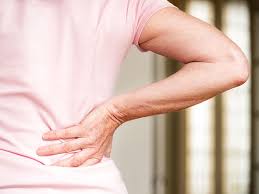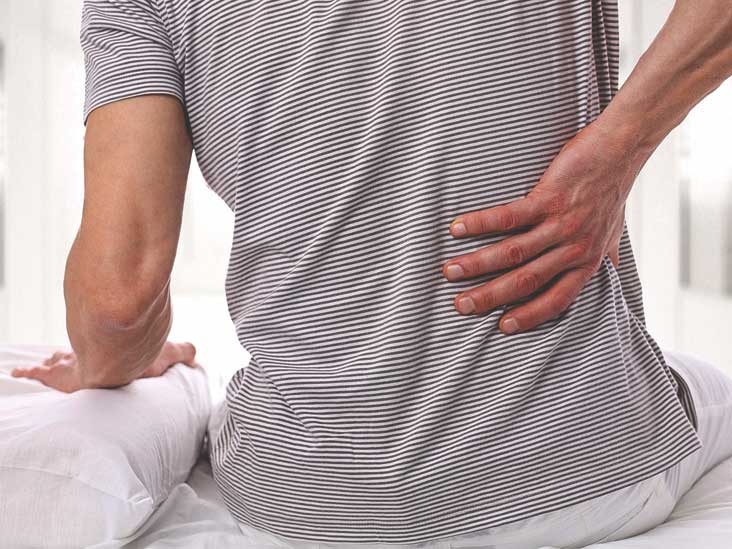In most cases, the first signs and symptoms appear in early adulthood. Inflammation may also occur in other sections of the body, the eyes being the most prevalent location for this condition. However, some people have significant and constant pain and a lack of flexibility in their spine. In addition, various symptoms may manifest if the illness spreads to other parts of the body.
There is currently no treatment available for ankylosing spondylitis. Medical professionals advise patients to participate in physical therapy and take prescribed drugs to alleviate symptoms such as pain and inflammation, improve posture and position of the body, and delay the course of the condition. Most individuals with ankylosing spondylitis may live productive lives with the help of therapy. Ankylosing spondylitis is a condition that cannot be cured, but some therapies might alleviate the symptoms and halt the course of the illness.
Symptoms
Pain and stiffness in the lower back and hips are possible early indications and symptoms of ankylosing spondylitis. These symptoms are more likely to be experienced first thing in the morning or after long periods of inactivity. In addition, weariness and neck aches are typical complaints. Over time, symptoms may worsen, get better, or cease altogether at sporadic periods. The symptoms of ankylosing spondylitis might vary greatly from one individual to the next. While some individuals have modest pain that comes and goes, others deal with severe pain that lasts for extended periods. It is possible for the symptoms of ankylosing spondylitis, regardless of how severe they are, to get worse during "flares" and to get better during "remissions."
The following are the regions that are most often impacted:
- The point of connection between the pelvis and the base of the spine.
- The individual bones that make up the lower back.
- The primary location of these attachments, which may also be found at the back of the heel and elsewhere in the spine, is called articulations.
- The cartilage is located between the ribs and the breastbone.
- The joints of the hip and the shoulder
When Should One Go To The Doctor?
If you have pain in your low back or buttocks that develops gradually, is worse in the morning, or wakes you up from sleep in the second half of the night, you should seek medical attention. This is especially important if the pain gets better when you exercise and worse when you sit or lie down. If you have significant light sensitivity, a painful red eye, or impaired vision, you should seek emergency medical attention from an ophthalmologist.

Causes
Although the exact origin of ankylosing spondylitis is unknown, there is some evidence that genetic predisposition may play a role. Specifically, those with a gene known as HLA-B27 are at an extremely elevated risk of developing ankylosing spondylitis. However, the disorder only manifests in some persons with the gene.
Determinants Of Risk
In most cases, the first symptoms appear in early adulthood or later in adolescence. The HLA-B27 gene is found in most patients who suffer from ankylosing spondylitis. However, many individuals with this gene do not ever acquire ankylosing spondylitis in their lifetime.
Complications
When ankylosing spondylitis is severe, the body's effort to mend itself results in the formation of new bone. This new bone fills in the space between the vertebrae over time and ultimately causes pieces of the vertebrae to fuse. Those particular regions of the spine eventually become rigid and unmovable. The rib cage may become more rigid after fusion, limiting its capacity and function.

Other Potential Issues Include The Following:
- Inflammation of the eyes (uveitis). Uveitis, one of the most prevalent consequences of ankylosing spondylitis, may produce sudden and severe discomfort in the eyes, sensitivity to light, and impaired vision. Immediately make an appointment with your primary care physician if you notice any of these symptoms.
- Compression fractures. In the early stages of ankylosing spondylitis, some patients experience a weakening of their bones. When weakened vertebrae are more likely to collapse, making a stooped posture even more severe. Fractures of the vertebrae may exert pressure on the spinal cord and the nerves that go through the spine, which can potentially cause injury to these structures.
- Problems with the heart The aorta, the body's biggest artery, may have complications due to ankylosing spondylitis. Inflammation of the aorta may cause it to grow to the point that it affects the shape of the aortic valve in the heart, which hinders the valve's ability to perform its normal job. Inflammation generally raises the chance of developing heart disease, and ankylosing spondylitis is connected with inflammation.
watch next


